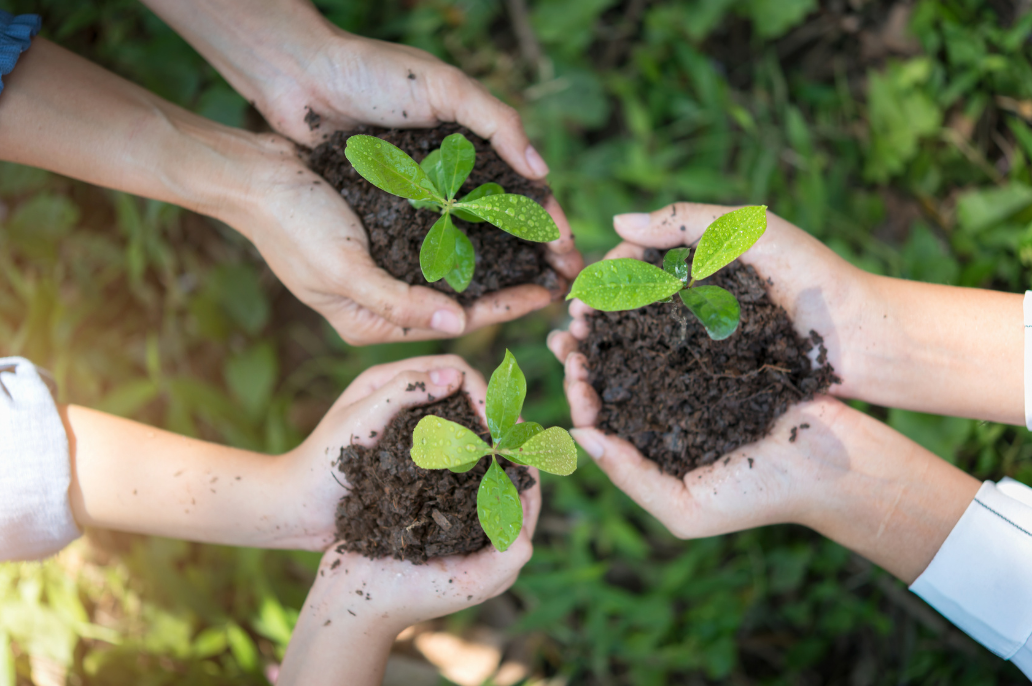Decompress is part of my herbal home pharmacy. It's great when I'm feeling anxious or depressed for no good reason. When the anxiety is more intense, I pair it with Quiet Mind.
Sara from Austin, Verified Buyer
At Herbalogic, we take a certain pride in the ingredients that go into our herbal formulas as well as in the process — called tincturing — we use to make them. People are understandably curious about how herbal tinctures are made, as its origins are decidedly ancient and low-tech. And though we have a few proprietary steps we’ll keep to ourselves, we’re happy to share the basics of the process with you.
Essentially, an herbal tincture is an extract of plant material in ethanol, or drinking alcohol, but it can include other ingredients. We believe minimal processing best preserves the plant’s beneficial chemistry, so we avoid heat and excessive manipulation. The only things that go into Herbalogic formulas are herbs, water, alcohol, and glycerine. We never use additives, fillers, preservatives, flavoring agents, or stabilizers. With the exception of using glycerin in the extraction process, our tinctures are made in a way that hasn’t changed much in hundreds of years.
 Herbs are the solid ingredients in a tincture, and they vary from formula to formula. The liquid ingredients, on the other hand, are constants, and they include water, glycerine, and alcohol.
Herbs are the solid ingredients in a tincture, and they vary from formula to formula. The liquid ingredients, on the other hand, are constants, and they include water, glycerine, and alcohol.
Water is a critical ingredient, since it’s the universal solvent, and we don’t scrimp on it. Herbalogic formulas use EarthH20 spring water delivered to our manufacturing facility in 5-gallon glass carboys. It is rich in naturally occurring minerals and tastes great.
Glycerine is another important part of our liquid mix, though it makes up only a small part of the total volume. As a longer chain alcohol with three hydroxyl groups, it’s great for dissolving essential oils in the herbs. It helps with sweetness, texture, and viscosity, and it prevents tannins from precipitating out of solution (important because tannins bond with a number of organic components that we want to keep in solution). Herbalogic tinctures use pharmaceutical grade glycerin made from sustainable non-GMO Palm oil.
Alcohol is an important liquid ingredient in a tincture, and we use only high-quality alcohol made from sugar cane for the consumer retail market. It’s far more costly than industrial ethanol from 55-gallon drums, but just as we believe you should never cook with a wine you wouldn’t drink, we believe you should never make a tincture with alcohol too harsh for sipping. And you can taste the difference.
Our tincturing process is about as low tech as you can get. The herbs, which may include dry and fresh ingredients in carefully portioned quantities, are ground and added to a stainless steel vat containing the extraction liquids, where they undergo a cold steep for a minimum of 21 days.
After extraction, the herb-liquid mixture is pressed to separate the largest solids from the rich tincture. After this first press, the liquid still contains suspended solids that need to be removed. One option is to force the liquid through a filter, but we prefer a gentler, more time-consuming method. We simply let the liquid sit undisturbed for two days, allowing gravity to draw the suspended solids to the bottom of the container. Then we carefully siphon the clear liquid off the top and leave the cloudy formula at the bottom behind.
Ours is one of the slowest and most expensive ways to make liquid herbal extracts. But we believe a simple, low-intervention process contributes to a more effective and better tasting tincture.

Help Us Support Communities and the Planet – One Review at a Time
We believe that for-profit companies have a responsibility to support non-profit organizations that do good work for our communities and planet.
That’s why we’re committed to donating $5 for every Herbalogic product review, whether it’s glowing or, well, a bit more candid. It’s our way of turning your feedback into positive action.
Real reviews from real people who’ve discovered that nature’s got their back. Spoiler: They’re loving it.
Sara from Austin, Verified Buyer

Jessica Pleasant, Verified Buyer

L.S, Verified Buyer

Anonymous, Verified Buyer

Lyndel Roble, Verified Buyer

Allex B, Verified Buyer

Copyright Herbalogic 2024
